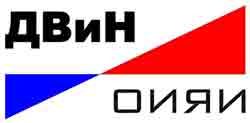Radiation safety
Radiation safety FAQ
- MAY THE PEOPLE GET EXPOSED TO RADIATION?
No, fast neutron radiation can be hazardous for humans. To avoid harmful effects, a detector operator must remain outside of the hazardous area. Hazardous area dimensions depend on neutron producer intensity. At peak intensity I = 5×107 c-1, the hazardous area radius R = 7.8 m, while at I = 1×107 c-1, the hazardous area radius R = 3.5 m.
- HOW HIGH IS THE RADIATION EXPOSURE DOSE OUTSIDE OF THE HAZARDOUS AREA?
"If this person gets in such situation (walking outside of the hazardous area during scanning in progress) not more than 25 times a year (2 times a month), annual dose shall not exceed 10 µSv a year* which corresponds to small radiation hazard and can be disregarded "
* General population annual radiation exposure dose limit is 1000 µSv.
"After fast neutron irradiation by complex DVIN-1 for a standard composition of examination object, comprised of foodstuff, domestic chemical products, radio electronic devices, tools and household articles, the ambient equivalent dose rate of photon radiation on the surface does not exceed background values."
"During operation of the portable complex DVIN-1 based on tracer neutrons technology for detection of explosive materials applied in accordance with Operation Manual, induced activity in examination objects does not pose any radiological hazard."
- DOES RADIACTIVITY GET INDUCED IN SCREENED OBJECTS, ENVIRONMENT, SCANNER ITSELF?
"There is no activation of object under control and environmental objects. Activation radiation dose rate from complex neutron generator structure immediately after its switching off (operation tune 10 minutes) does not exceed 0.4 µSv/h, and in 10 minutes after switching off does not exceed background values."
© 2010-2025 "Neutron technologies" LLC. When using the materials citation of the source is required.




